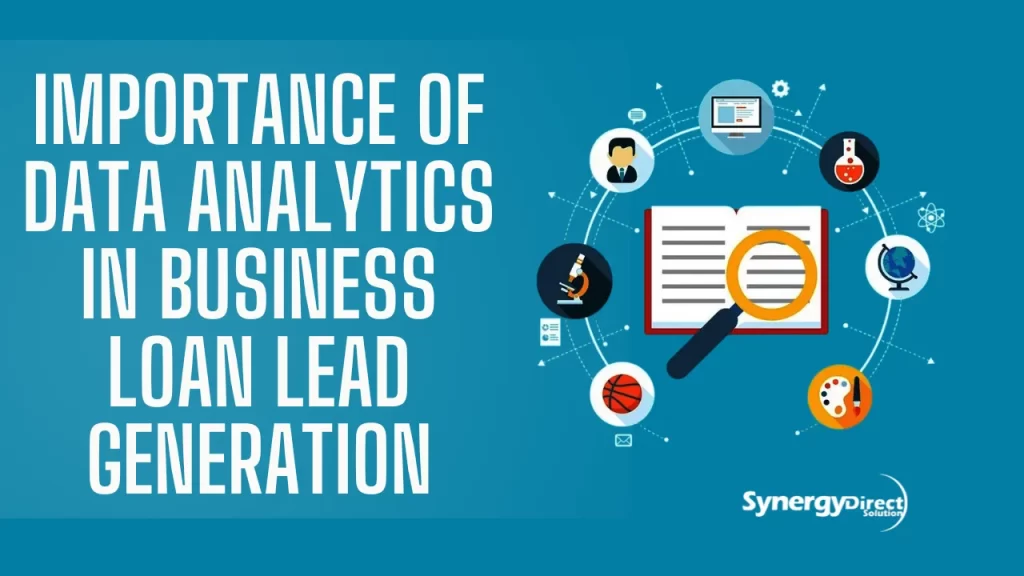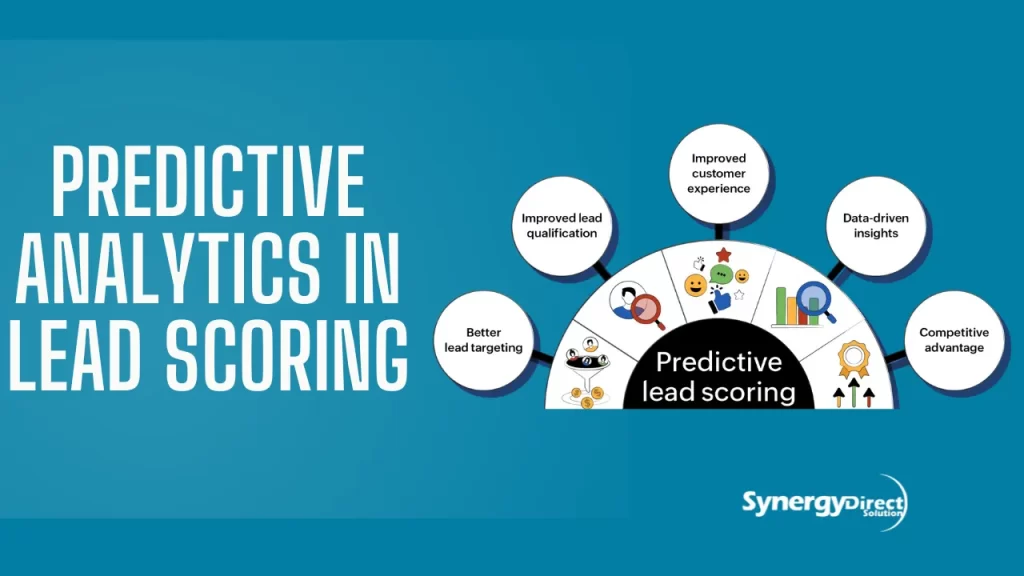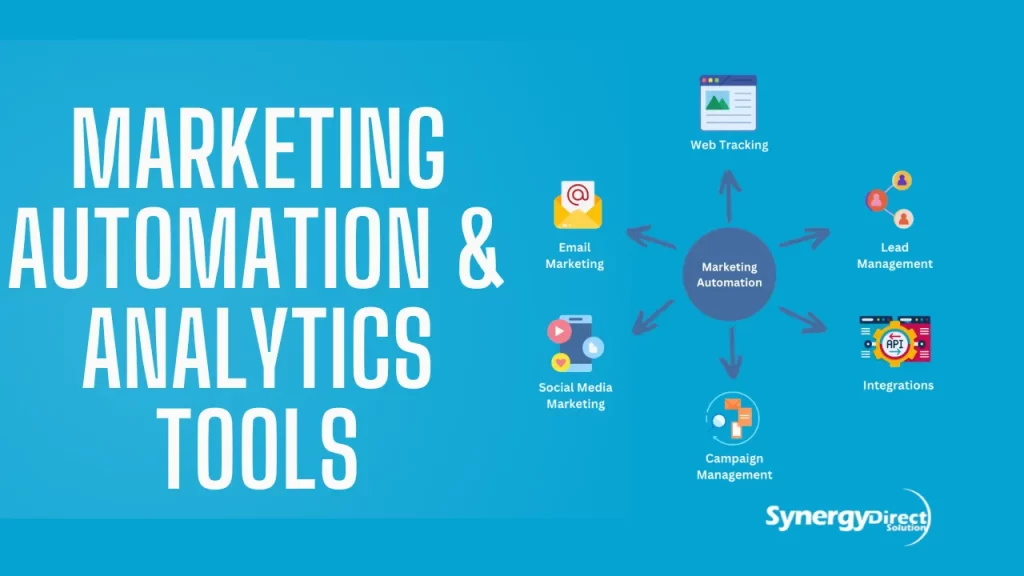The Importance of Data Analytics in Business Loan Lead Generation
In today’s digital-first marketplace, businesses seeking loans are no longer reliant on traditional bank visits or word-of-mouth referrals. Instead, they operate in a data-driven environment where smart insights fuel smarter decisions. At the heart of this transformation lies data analytics — a powerful tool that reshapes how lenders attract, assess, and convert potential borrowers.
Business loan lead generation is a strategic activity that connects lenders with qualified potential borrowers. However, without the right technology and data insight, generating high-quality leads can be a costly and time-consuming endeavor. This is where data analytics plays a vital role — by enabling predictive modeling, audience segmentation, campaign optimization, and performance tracking.

In this article, we will explore how data analytics is revolutionizing business loan lead generation
making it more targeted, efficient, and profitable.
Understanding Importance of Data Analytics in Business Loan Lead
Data analytics plays a pivotal role in modern lead generation strategies by enabling businesses to collect, analyze, and interpret vast amounts of customer data to make informed decisions. Through tools like Google Analytics, CRM platforms, and AI-powered dashboards, companies can track user behaviors, preferences, and interactions across multiple channels.
This data helps marketers identify which campaigns are driving the most traffic, where leads are dropping off in the sales funnel, and what content resonates best with their audience. By leveraging predictive analytics, businesses can also forecast future lead behavior, personalize messaging, and allocate marketing budgets more efficiently.
Ultimately, data analytics transforms lead generation from a guessing game into a data-driven process that increases conversion rates and enhances ROI.
Role of Predictive Analytics in Lead Scoring
Predictive analytics plays a critical role in lead scoring by using historical data, machine learning algorithms, and statistical modeling to forecast the likelihood of a lead converting into a customer. Instead of relying solely on traditional lead scoring methods—such as assigning arbitrary points based on email clicks or form submissions—predictive analytics evaluates a broader range of behavioral and demographic data to generate a more accurate and dynamic score.
It analyzes patterns from past successful conversions and applies those insights to new leads, automatically prioritizing the ones most likely to convert. This not only streamlines the sales process but also ensures that sales teams focus their efforts on high-potential leads, reducing wasted time and increasing efficiency.
By continuously learning and adapting, predictive lead scoring helps businesses stay agile in an ever-changing market and enhances the precision of their customer acquisition strategies.

Best Practices to Leverage Data Analytics in Loan Lead Generation
Here are actionable steps for financial firms looking to harness data analytics effectively:
1. Establish Clear KPIs
Start by defining key performance indicators such as lead-to-application ratio, conversion rate, time-to-close, and average loan size.
2. Integrate Data Across Systems
Ensure that your CRM, marketing automation, and analytics tools are interconnected for a holistic view.
3. Clean and Enrich Data
Regularly cleanse your database to eliminate duplicates and outdated leads. Use third-party tools to enrich profiles with firmographic or behavioral insights.
4. Adopt Predictive Models
Use scoring models to prioritize leads. Incorporate external data like credit bureau reports or business ratings for deeper accuracy.
5. Measure and Iterate
Implement A/B testing, monitor performance, and refine strategies continuously. Data analytics should be a loop — not a one-time setup.
Using Data Analytics to Measure and Optimize Lead Generation Efforts
Data analytics is essential for measuring and optimizing lead generation efforts, as it provides a clear, data-driven view of how leads are acquired, engaged, and converted. By tracking key performance indicators (KPIs) such as cost per lead, conversion rates, bounce rates, and lead source effectiveness, businesses can evaluate the success of their marketing campaigns and identify areas for improvement.
Advanced analytics tools enable real-time monitoring and deeper insights into user behaviors, such as which pages visitors spend the most time on or what content drives the highest engagement. With this information, marketers can fine-tune their strategies—adjusting ad spend, refining messaging, or reworking landing pages to increase lead quality and volume.
Additionally, A/B testing and attribution modeling powered by data analytics help determine which channels or touchpoints contribute most to lead generation success. Overall, leveraging analytics ensures that lead generation is not only measurable but also continuously optimized for better performance and higher ROI.
Collecting and Interpreting Data to Identify High-Potential Leads
Collecting and interpreting data is crucial for identifying high-potential leads that are more likely to convert into customers. This process begins with gathering a wide range of data points across various channels, including website interactions, email responses, social media engagements, and past purchase behaviors.
Tools like customer relationship management (CRM) systems and marketing automation platforms help centralize and organize this data, providing a comprehensive view of each lead’s journey. Once the data is collected, advanced analytics can be used to identify patterns and trends that distinguish high-potential leads.
For example, leads who have interacted with key content or demonstrated a higher level of engagement (such as multiple visits to product pages or downloads of case studies) are often more likely to convert.
Additionally, demographic and firmographic data, like company size or industry, can be valuable for segmenting leads and identifying those who align with your ideal customer profile.
By using predictive analytics to assess historical behaviors and forecast future actions, businesses can prioritize leads with the highest likelihood of conversion, ensuring that marketing and sales efforts are focused on the most promising prospects. This data-driven approach enhances efficiency, reduces wasted effort, and ultimately improves lead conversion rates.
Implementing Predictive Analytics to Forecast Lead Conversion Rates
Implementing predictive analytics to forecast lead conversion rates is a game-changer for businesses looking to optimize their lead generation strategies. Predictive analytics uses historical data, machine learning algorithms, and statistical models to identify patterns and trends that indicate the likelihood of a lead converting into a customer. By analyzing past interactions, behaviors, and characteristics of leads that eventually converted, predictive models can create a scoring system that ranks new leads based on their potential to close.
For example, predictive analytics can factor in elements such as lead source, engagement with content, demographic information, and past purchase behavior to build a detailed profile of high-converting leads. With this information, sales teams can prioritize leads that exhibit similar behaviors and characteristics as previous successful conversions.
Moreover, by continuously refining the models with new data, businesses can adapt their strategies to changing market conditions, customer behaviors, or shifts in buyer intent. Predictive analytics also enables businesses to forecast the overall conversion rate for different segments, campaigns, or even sales teams, allowing for more precise resource allocation and better alignment between marketing and sales efforts.
Ultimately, implementing predictive analytics not only improves lead prioritization but also helps to enhance the accuracy of sales forecasts, reduce churn, and increase overall ROI by focusing on leads with the highest potential for conversion.
Tools and software for effective data analysis in lead generation
Here’s a curated list of tools and software for effective data analysis in lead generation, organized by category:
1. Web Analytics Tools
These tools help track website traffic and user behavior—key for understanding where leads come from.
- Google Analytics
- Adobe Analytics
- Matomo
2. CRM & Lead Management Tools
Customer Relationship Management (CRM) software helps store, track, and analyze lead data throughout the customer journey.
- HubSpot CRM
- Salesforce
- Zoho CRM
- Pipedrive
3. Marketing Automation & Analytics Tools
These tools provide marketing campaign insights, lead scoring, and automated nurturing flows.
- Mailchimp
- ActiveCampaign
- Marketo
- Sendinblue
- GetResponse

4. Business Intelligence (BI) & Data Visualization Tools
Great for deep data analysis, custom dashboards, and reporting.
- Tableau
- Power BI
- Looker
- Zoho Analytics
- Google Data Studio (Looker Studio)
5. SEO & Lead Intelligence Tools
Identify new leads via search behavior and optimize campaigns.
- SEMrush
- Ahrefs
- Ubersuggest
- SpyFu
6. Lead Capture & Visitor Intelligence Tools
Turn anonymous visitors into qualified leads.
- Leadfeeder
- Albacross
- Clearbit
- Lusha
- OptinMonster
7. Behavioral Analytics Tools
Understand how users interact with your site and forms to boost lead conversion.
- Hotjar
- Crazy Egg
- Mouseflow
- Lucky Orange
8. Form & Survey Tools
Collect lead information and feedback effectively.
- Typeform
- Google Forms
- Jotform
- SurveyMonkey
The Role of Data Analysis in Lead Generation Qualification
Data analysis plays a pivotal role in qualifying leads by transforming raw information into actionable insights. Instead of relying on guesswork or generic outreach strategies, businesses can use data to identify which leads are most likely to convert.
Through the analysis of behavioral data, such as website visits, email interactions, content downloads, and demographic details, companies can assign lead scores and segment prospects based on interest and engagement levels. This helps sales and marketing teams focus their efforts on high-potential leads, improving conversion rates and reducing time spent on unqualified prospects.
Furthermore, predictive analytics and machine learning can enhance this process by identifying patterns in historical data that indicate future buying behavior. Overall, data-driven lead qualification ensures more accurate targeting, better personalization, and higher return on investment for lead generation campaigns.
The Role of Data Analysis in Lead Segmentation
Data analysis is essential for effective lead segmentation, enabling businesses to categorize their prospects based on meaningful criteria such as behavior, demographics, industry, or engagement levels. By analyzing customer data from various touchpoints—like email interactions, website behavior, purchase history, and social media activity—companies can divide their leads into specific segments that reflect different needs or buying intentions.
This segmentation allows for more personalized marketing, tailored messaging, and strategic follow-ups, which significantly improve engagement and conversion rates. For example, a highly engaged lead who frequently visits pricing pages may be placed in a “sales-ready” segment, while a casual blog reader may belong to a “nurture” segment.
Advanced analytical tools and machine learning algorithms can further refine these segments by identifying patterns and predicting future behavior. Ultimately, data-driven lead segmentation helps marketers target the right people with the right message at the right time, increasing the overall effectiveness of lead generation efforts.
Additional Benefits of Data Analytics
Beyond lead qualification and segmentation, data analytics offers a range of additional benefits that enhance overall marketing and business strategy. One major advantage is improved decision-making—analytics provides factual insights that reduce reliance on intuition, allowing teams to allocate resources more effectively.
It also enables real-time performance tracking, helping businesses identify what’s working and make quick adjustments to underperforming campaigns. Additionally, data analytics supports forecasting and trend analysis, empowering organizations to anticipate customer behavior and market shifts.
Another benefit is increased operational efficiency, as analytics can reveal bottlenecks in sales funnels or inefficient processes. By understanding customer preferences and engagement patterns, companies can also enhance user experience and customer satisfaction.
Moreover, integrating data analytics across departments fosters collaboration and aligns marketing and sales goals, ensuring a unified approach to lead generation and conversion. In essence, data analytics drives smarter, faster, and more impactful business outcomes.
Conclusion
In today’s fast-paced and highly competitive lending landscape, the strategic use of data analytics has become indispensable for effective business loan leads. From identifying high-potential leads to segmenting audiences and forecasting conversion rates, data analytics transforms the entire lead generation process into a streamlined, data-informed system. Beyond traditional benefits, analytics also supports better decision-making, boosts operational efficiency, and enhances customer experience through personalization and timely engagement. By adopting a data-first mindset and leveraging the right tools and practices, financial institutions and lenders can not only generate more leads but also convert them more effectively—ensuring sustainable growth and a stronger return on investment. As data continues to drive innovation, those who embrace analytics will be best positioned to lead in the future of loan marketing.
FAQS
1. How can small lenders with limited budgets use data analytics for lead generation?
Small lenders can harness affordable and user-friendly data analytics tools like Google Analytics, HubSpot CRM (free version), and Zoho CRM to track website traffic, lead behavior, and campaign performance. These tools help prioritize high-intent prospects and uncover which channels drive the most qualified leads. Additionally, using free visualization tools like Looker Studio can aid in understanding trends and making data-backed decisions without the need for an enterprise budget.
2. What kind of data is most valuable for improving business loan marketing campaigns?
The most valuable data includes lead source data, engagement metrics (clicks, time on site, form completions), demographics (location, business type, revenue), and behavioral data (repeat visits, content viewed, device used). Combining these data points allows marketers to identify patterns, optimize messaging, and personalize outreach strategies to improve engagement and conversion rates in business loan campaigns.
3. How does AI enhance data analytics for business loan lead generation?
AI enhances data analytics by enabling real-time predictive modeling, automating lead scoring, and identifying patterns across massive datasets that would be difficult for humans to detect. It allows lenders to predict loan eligibility, personalize communications, and dynamically adjust targeting based on evolving behavior. AI-driven chatbots and recommendation engines also help in pre-qualifying leads and reducing drop-offs in the application funnel.
4. What is the difference between descriptive and predictive analytics in lead generation?
Descriptive analytics focuses on summarizing past performance—such as how many leads converted last month or which campaigns performed best—using tools like dashboards and reports. In contrast, predictive analytics uses historical data and algorithms to forecast future outcomes, like which leads are most likely to convert or default. Both are important: descriptive analytics helps understand what happened, while predictive analytics guides what to do next.
5. Can data analytics help reduce lead fraud in business loan marketing?
Yes, data analytics plays a vital role in detecting and reducing lead fraud. By analyzing IP addresses, session patterns, form completion behavior, and inconsistencies in submitted data, analytics tools can flag suspicious activity. Lead validation software, combined with machine learning algorithms, can detect fraudulent leads in real time—ensuring lenders only engage with genuine prospects, improving ROI and reducing risk.
